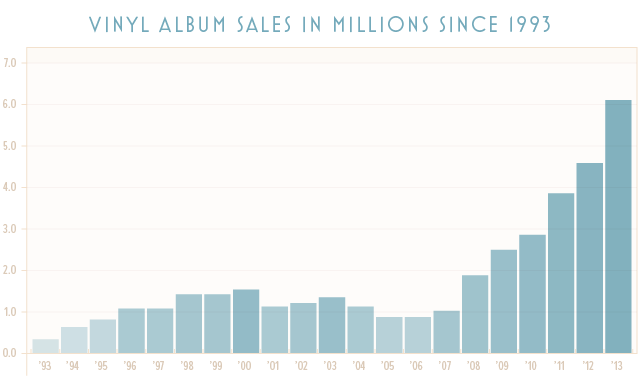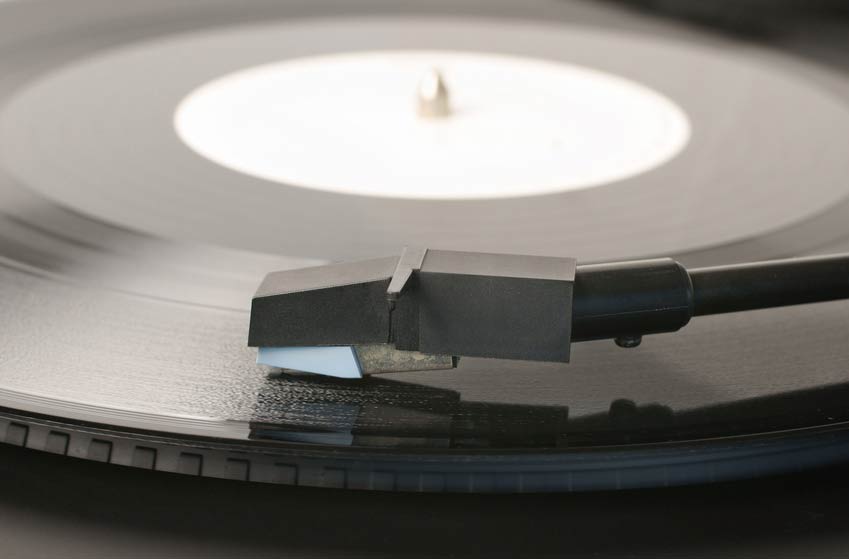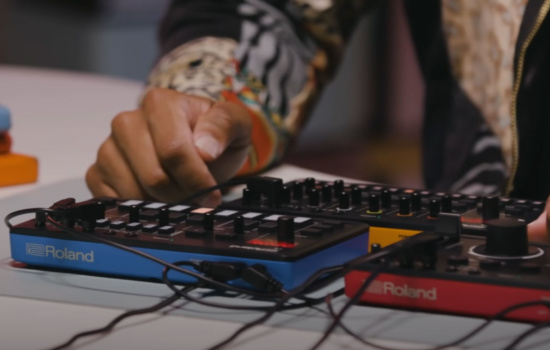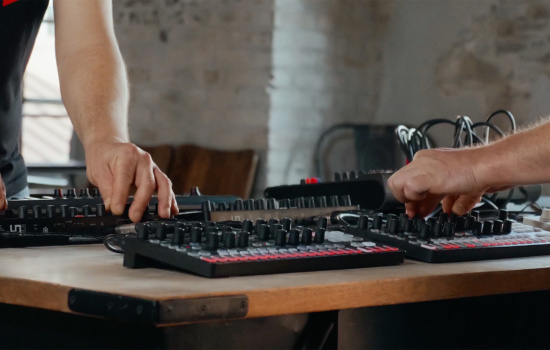The standard explanation for why vinyl survived beyond the 1990’s is that it just sounds better. Vinyl has a pleasing level of low-level noise and distortion, which often blends a track together more cohesively, and also evokes a twinge of nostalgia. Some noise and distortion is pleasing to the ear, like how many people find the sound of the ocean relaxing. This, plus the extensive additional mastering which must be performed to prepare a track for the vinyl format, contributes to give vinyl its ‘warmth’.
But this isn’t the real reason more people are listening to vinyl now. The format has always had those characteristics, and music online in 2000 was certainly worse than the high-quality files most people can stream today. What’s really going on?
Vinyl is a cultural trend which reaches beyond music.
In an era in which most of our lives are spent on computers and our culture is increasingly consumed as data, people have begun to crave physical, tangible manifestations of the things they love. It’s no secret that music has pulled inexorably away from live instruments into compositions composed wholly (or nearly so) on a computer.
Hundreds of thousands of people each year show up to music festivals like Ultra or EDC, in which most songs are composed and performed through computers, and even more people simply watch the festival through video streaming sites like Twitch. Even a modern rock track performed by a 4-piece band is often constructed from Steven Slate drum samples, virtual bass and guitar amplifiers, and vocals run through Melodyne.
We crave authentic experiences, tangible products, and to give the interests which shape our identities a proper sense of importance. In data, everything is equal; but in life, some things matter to us more than others.
Vinyl is the perfect antidote. It’s a physical object you hold in your hands. The music is etched into the record, and the ritual of putting on a record helps ensure that you focus on listening to the music, not just having it on in the background. Records are beautiful; they belong on the walls of your apartment as much as on the turntable. And vinyl has the unique power to both directly refer to pop culture and to remain part of the cultural underground.
Records are symbolic; they are a way to define identity around favorite artists and genres; a way to indicate who you really are. Vinyl will never regain its throne as the standard way people consume their music, but this is a core reason why it’s becoming so popular. Instead of completely displacing the analog medium, digital technologies helped re-contextualize it.
Modern vinyl records are incredibly successful because they completely buy in to the trend of authenticity. They’re almost entirely small-batch, boutique-pressed runs, released as limited editions, collector’s editions, or displayed in iconic and bold colors. And artists can add even more symbolism by pressing the ashes of their lyrics, dirt from their hometown, or even their own blood (in rare cases, as this is generally prohibited by pressing plants) directly into the records.
The 50th Anniversary Edition of Kind of Blue by Miles Davis was released in 2009, and contained a translucent blue 180g vinyl record, exquisitely printed pictures, and a richly-illustrated hardcover book about the cultural significance of the album. That’s what the vinyl trend is about — the ability to form an intimate and respectful relationship with an artist who you identify on a visceral level. Vinyl is the best method.



























